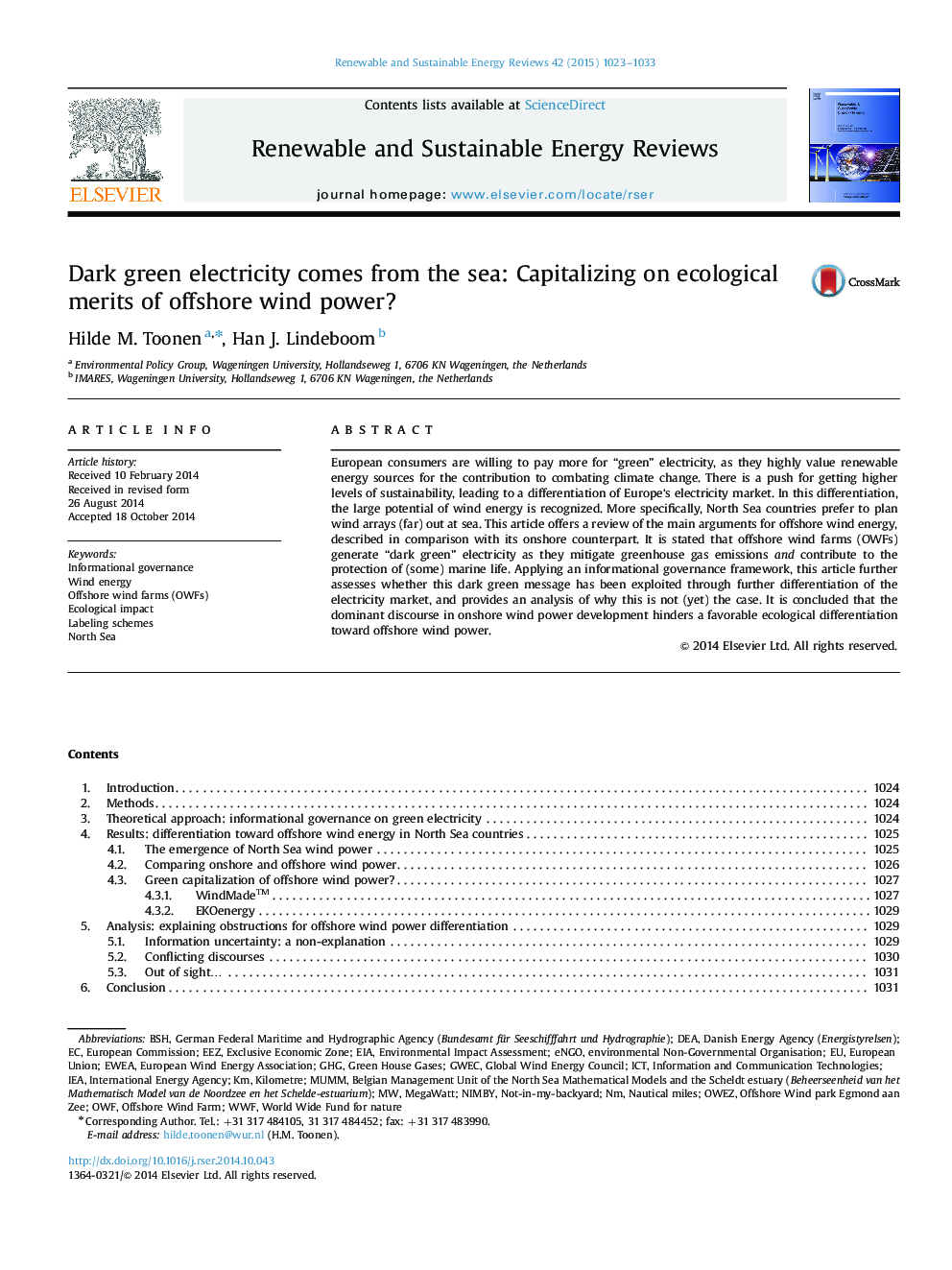| Article ID | Journal | Published Year | Pages | File Type |
|---|---|---|---|---|
| 8118075 | Renewable and Sustainable Energy Reviews | 2015 | 11 Pages |
Abstract
European consumers are willing to pay more for “green” electricity, as they highly value renewable energy sources for the contribution to combating climate change. There is a push for getting higher levels of sustainability, leading to a differentiation of Europe's electricity market. In this differentiation, the large potential of wind energy is recognized. More specifically, North Sea countries prefer to plan wind arrays (far) out at sea. This article offers a review of the main arguments for offshore wind energy, described in comparison with its onshore counterpart. It is stated that offshore wind farms (OWFs) generate “dark green” electricity as they mitigate greenhouse gas emissions and contribute to the protection of (some) marine life. Applying an informational governance framework, this article further assesses whether this dark green message has been exploited through further differentiation of the electricity market, and provides an analysis of why this is not (yet) the case. It is concluded that the dominant discourse in onshore wind power development hinders a favorable ecological differentiation toward offshore wind power.
Keywords
GHGDEAOWFIEAEWEAWorld Wide Fund for NatureWWFEEZGWECLabeling schemesBSHInternational energy agencyEuropean UnionEnvironmental Impact AssessmentEuropean Wind Energy AssociationWind energyEIAEcological impactNorth SeaInformation and communication technologiesICTOffshore wind farmExclusive economic zonemegawattNimbyEuropean CommissionKilometreGreen house gases
Related Topics
Physical Sciences and Engineering
Energy
Renewable Energy, Sustainability and the Environment
Authors
Hilde M. Toonen, Han J. Lindeboom,
